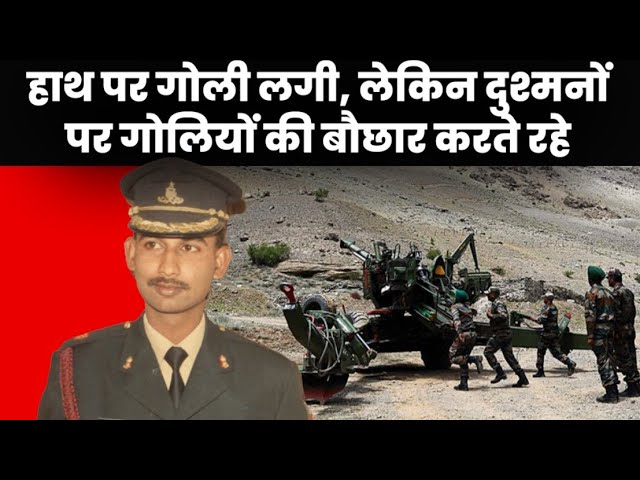The podcast episode titled “Exclusive Conversation with Kargil War Veteran Brigadier D S Tripathi” was hosted by Forum For Global Studies, a Delhi based multidisciplinary thinktank. The talk featured distinguished guest Veteran Brigadier D S Tripathi, Indian Army. The podcast focused on the nuances of the historic Kargil war of 1999.
The moderator began the discussion by questioning the grounds and facts regarding the Kargil War of 1999. Brigadier D S Tripathi elaborated on key events, such as Operation Meghdoot in 1984, which planted the seeds of rivalry between India and Pakistan, eventually culminating in the Kargil War of 1999.He discussed Zulfikar Ali Bhutto’s strategy, commonly referred to as “bleed India with a thousand cuts,” which aimed to undermine India through ongoing,
low-intensity conflicts instead of direct military confrontation.He further discussed India’s nuclear test in 1988, followed by Pakistan’s test. These events played a significant role in shaping the foundations for future conflict. He also mentioned the Lahore Declaration, highlighting its importance in the context of India-Pakistan relations.
Further, the moderator questioned the failure of Indian intelligence to gather leads for the war. Brigadier D S Tripathi highlighted the role of Pakistan’s NLI- Northern Light Infantry specialized in mountainous warfare in the war. He gave an overview of the prevailing conditions at the time of Kargil War. The speaker also mentioned Pakistan’s denial of responsibility, claiming that the enemy troops were not part of the Pakistani Army but were instead affiliated with militant groups. Brigadier D S Tripathi later explained that the Indian forces were initially unaware of the true situation on the hills. They sent a small unit led by Captain Saurabh Kalia to confront what they believed were militants, only to discover that the enemy was actually the Pakistani Army in civilian clothing, controlling the posts.Additionally, he spoke about how the Pakistani Army’s use of elevated positions and civilian clothing to blend in with the landscape created significant tactical challenges. The conflict involved complex logistics and supply issues, necessitating precise and coordinated responses to the evolving situation on the ground. He also highlighted the tactical use of Bofors guns, which were specifically designed for combat in hilly terrain.He also addressed the supply chain issues and controversy surrounding Bofors guns, which posed significant challenges during the Kargil conflict.
Moving ahead, the speaker questioned the readiness of the armed forces for the war. Brigadier D S Tripathi responded by stating that while there was a level of readiness, it was not sufficient for a war of such a large scale. He explained the Pakistani Army’s use of elevated positions and civilian clothing to blend in with the landscape created significant tactical obstacles. This elevated position gave them a crucial edge over the Indian Army. He spoke about the valor, bravery, and patriotism of the Indian Army in their determination to reach the location.
Later, Both experts discussed the intense battle, characterized by challenging terrain and determined resistance, as well as the limitations faced by the Indian Army.Moving forward, Brigadier Tripathi discussed the challenges faced by the Indian Army during the Kargil War. The conflict posed numerous difficulties, including the rugged high-altitude terrain that severely tested the endurance and capabilities of Indian troops. Harsh weather conditions, with freezing temperatures and poor visibility, further compounded the challenges of warfare.
He elucidated the formidable challenge posed by the full moonlight. The bright moon illuminated the battlefield, giving the enemy improved visibility and complicating the Indian forces’ efforts to approach and capture positions covertly. This unexpected lighting condition not only exposed the advancing troops but also made it harder to execute surprise maneuvers, forcing soldiers to adapt their strategies under difficult circumstances. He discussed Tololing, the 4875 battalion sector, and Tiger Hill as the key difficult points in the Kargil battle. Brigadier Tripathi elaborated that the role of the Air Force in the battle was crucial, providing essential support through aerial reconnaissance, close air support, and targeted strikes. Their involvement helped to disrupt enemy positions, supply lines, and reinforcements, and provided valuable intelligence that aided the ground forces in their operations.He later discussed Israel’s aid in providing UAVs for intelligence and surveillance, which significantly enhanced the ability to gather crucial information and monitor enemy movements during the conflict.
The speaker further discussed that despite logistic and supply challenges, artillery effectively contributed to the conflict by delivering heavy firepower, targeting enemy positions, fortifications, and supply routes. It played a key role in softening enemy defenses, disrupting their operations, and supporting ground troops in advancing and capturing strategic locations. Brigadier Tripathi also highlighted the extraordinary courage and dedication of the soldiers, who confronted immense challenges with steadfast determination. Their commitment to defending the nation’s honor and their willingness to sacrifice for their country exemplified the highest ideals of military service and national pride.
Later, the moderator concluded the roundtable discussion by offering a vote of thanks to the panelists. He expressed gratitude for the invaluable insights shared, which were grounded in actual experiences and incidents from the Kargil War. The discussion highlighted the remarkable valor and bravery of the Indian Army, shedding light on the personal and strategic challenges faced during the conflict.

